US stocks staged a reversal and tumbled sharply overnight after US President Donald Trump halted stimulus negotiations with Democrats, until after election. He revealed in a tweet “I have instructed my representatives to stop negotiating until after the election when, immediately after I win, we will pass a major Stimulus Bill that focuses on hardworking Americans and Small Business.” The USD 2.2 trillion price tag is an issue that some Republicans explicitly opposed to. Besides, they’re also against the bailout of state and local governments. Separately, Trump urged immediately approval of USD 25 billion bailout for airline and small businesses, with the unused funds from the Cares Act.
DOW closed down -1.34% or 375.88 pts at 37772.76, nearly all of Monday’s gains. Our overall view on DOW is unchanged. Current rise from 26537.01 is seen as the second leg of the consolidation pattern from 29199.35 high. While further rise cannot be ruled out, we wouldn’t expect a clean break of 29199.35. Another falling leg is expected before the consolidation completes. Sustained break of 55 day EMA (now at 27407.26) will suggest that the third leg has started towards 38.2% retracement of 18213.65 to 29199.35 at 25002.81.



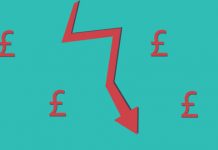
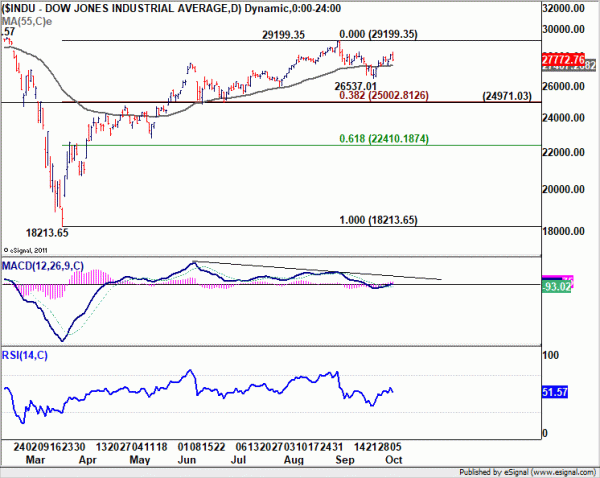
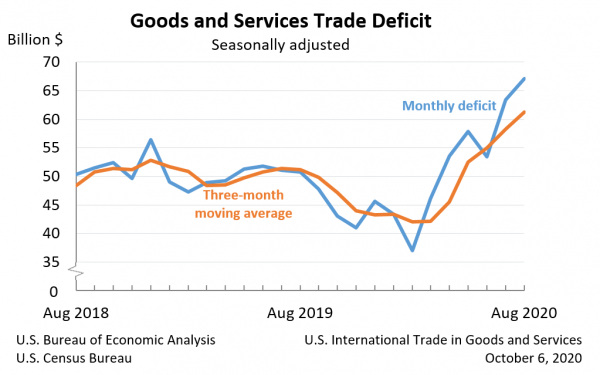
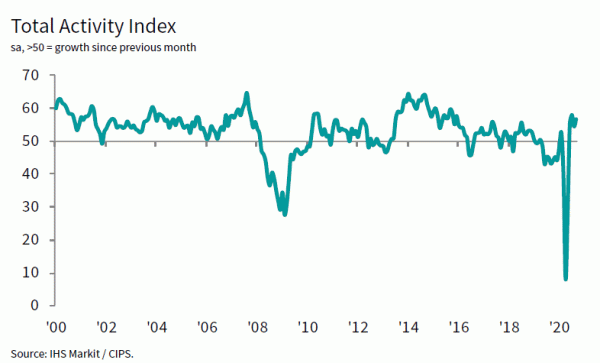
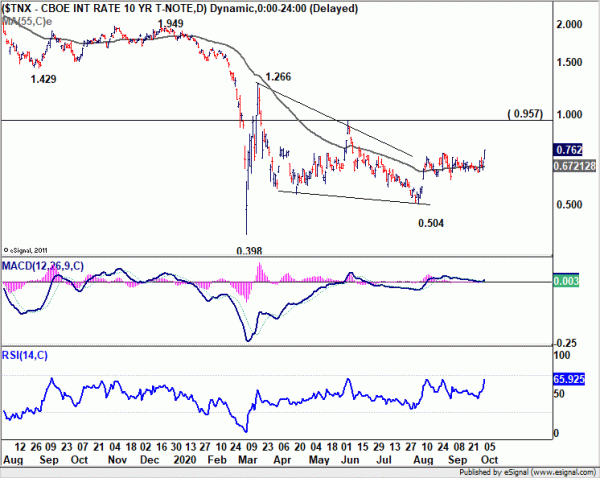
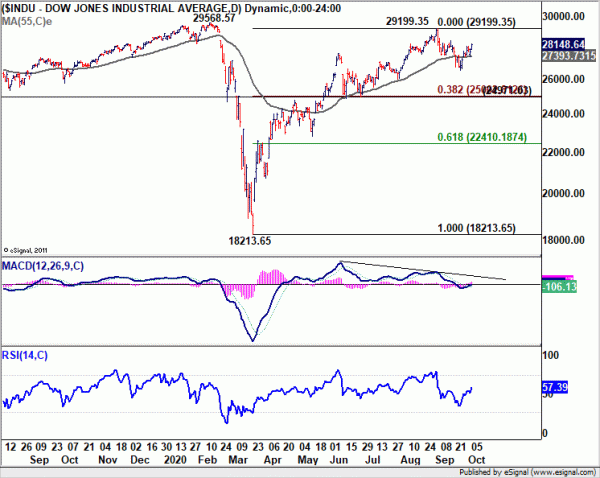
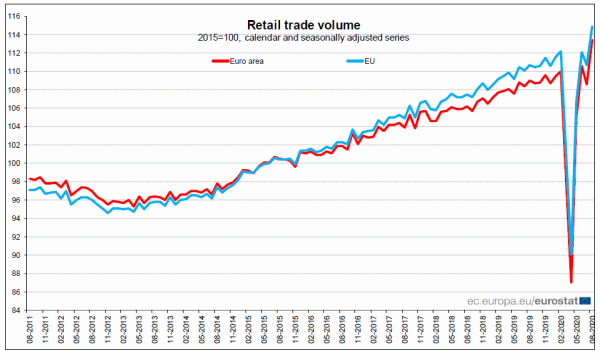
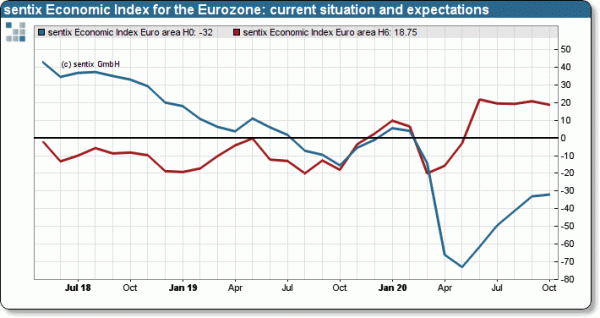
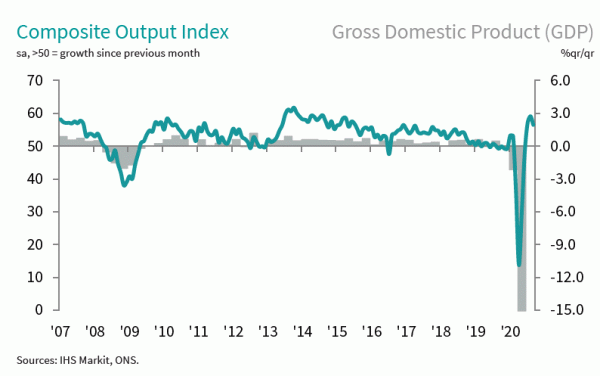
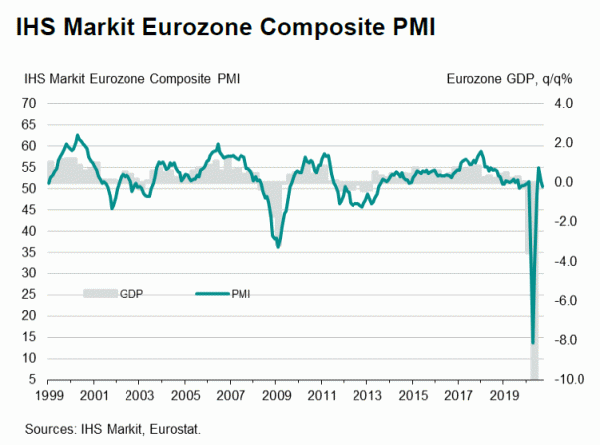
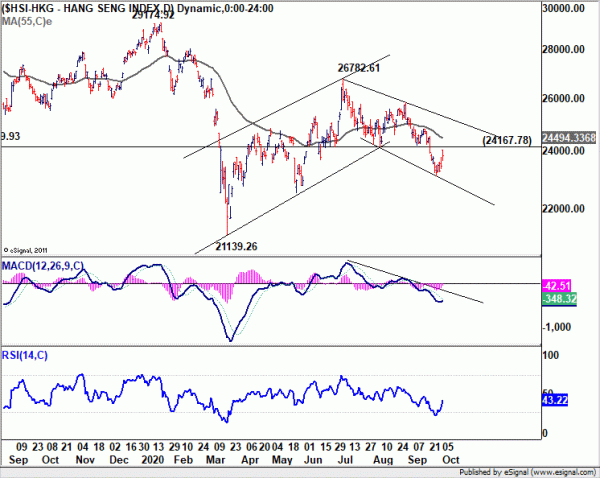

Gold rejected by trend line resistance, heading back to 1848 support
Gold’s sharp fall and breach of 1681.30 support suggests that recovery from 1848.38 has completed at 1921.01, after rejection by near term falling trend line resistance. Further fall is now in favor to 1828.39 support. Break there will extend the correction from 2075.18 to 61.8% retracement of 1670.6 to 2075.18 at 1825.18. This will remain the favored case now as long as 1921.01 resistance holds. Also, such development, if happens this way, will likely be accompanied by stronger rebound in Dollar.